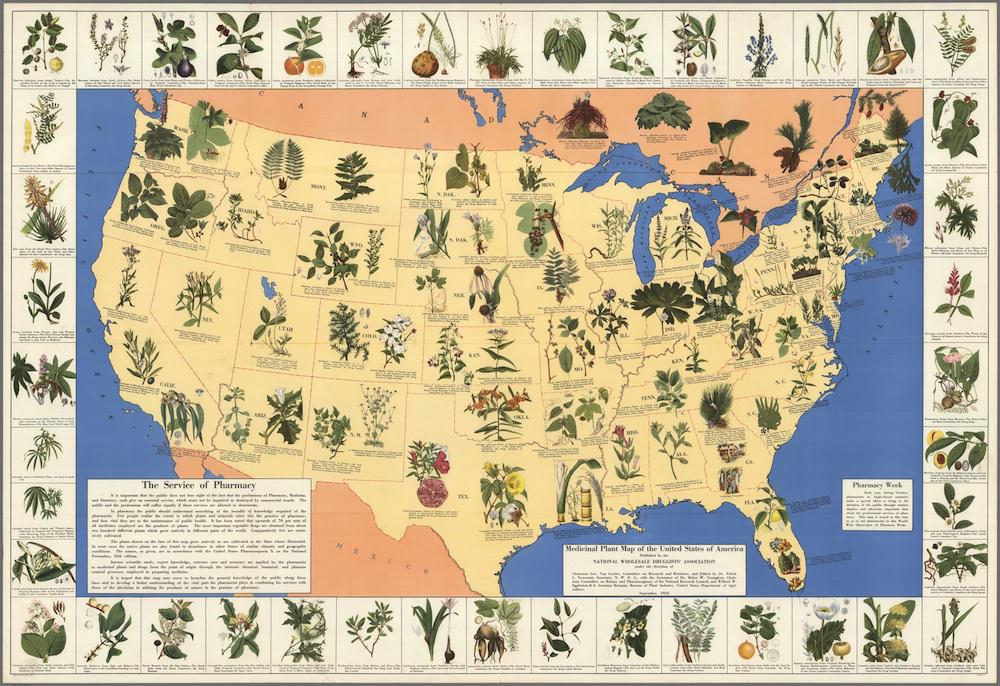The Vault is Slate’s history blog. Like us on Facebook, follow us on Twitter @slatevault, and find us on Tumblr. Find out more about what this space is all about here.
This map of medicinal plants depicts one or two important species that grew in each state in 1932, identifying the plant as native or cultivated and describing its medical uses. A few species of seaweeds float in the map’s Atlantic Ocean, and the border identifies important medicinal plants from around the world.
The map, printed by the National Wholesale Druggists’ Association for use of pharmacists during a promotional campaign called Pharmacy Week, was intended to boost the image of the profession. At a time when companies were increasingly compounding new pharmaceuticals in labs, pharmacists wanted to emphasize their ability to understand and manipulate the familiar medicinal plants that yielded reliable “vegetable drugs.” “Intense scientific study, expert knowledge, extreme care and accuracy are applied by the pharmacist to medicinal plants and drugs,” the box of text in the map’s lower left-hand corner reads, “from the point of origin through the intricate chemical, botanical, and pharmaceutical processes employed in preparing medicine.”
As historians Arthur Daemmrich and Mary Ellen Bowden write, the early 1930s were a turning point in the pharmaceutical industry. In the previous decades, chemists working for large companies had begun to systematically invent new medicines for the first time, developing synthesized aspirin and vaccines for diseases like tetanus and diphtheria. The 1938 Food, Drug, & Cosmetic Act would bring a heightened level of federal regulation to the production of new medicines. And in the 1930s, 1940s, and 1950s, researchers would go on to invent a flood of new antibiotics, psychotropics, antihistamines, and vaccines, increasingly relying on synthetic chemistry to do so. The pharmacist’s direct relationship to the preparation of medicine would diminish accordingly.
Click on the image below to reach a zoomable version, or visit the map’s page on the David Rumsey Map Collection website.

David Rumsey Map Collection.